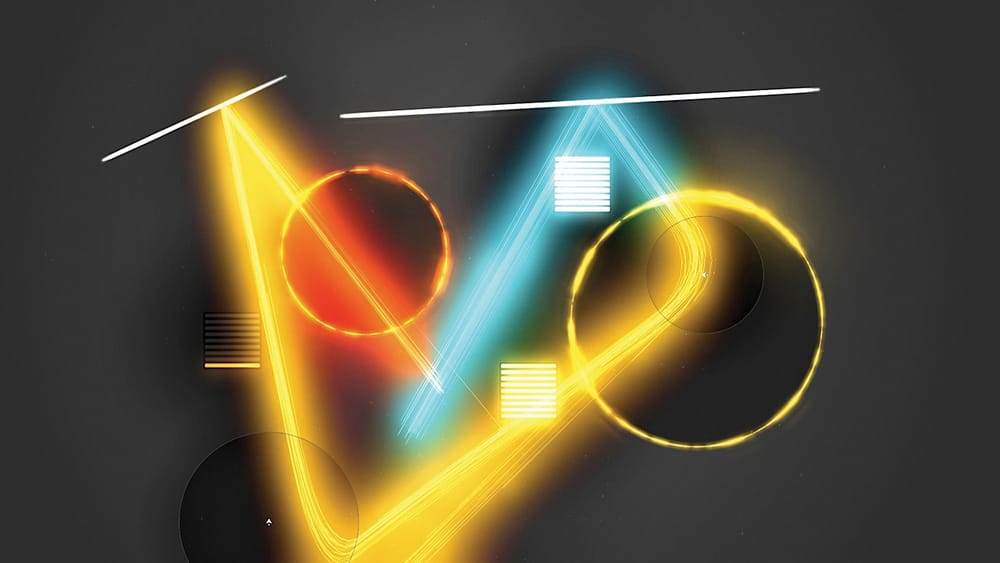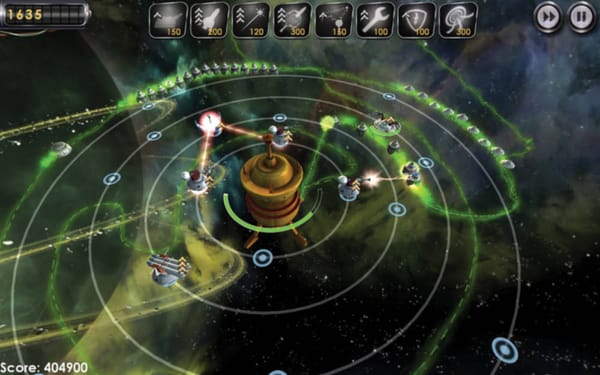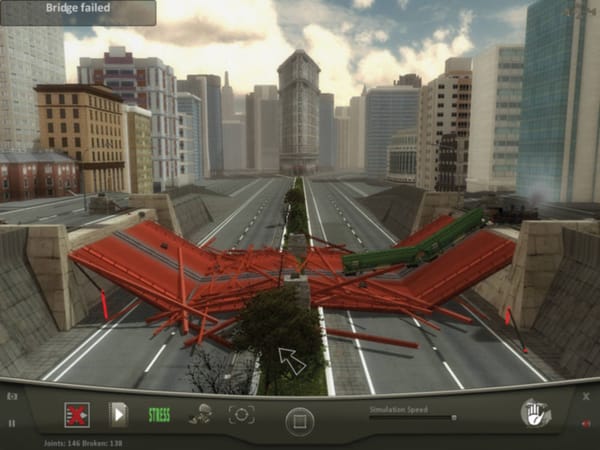Loud and clear: Auditorium HD
Basically synesthesia, but with less LSD involved

As a physicist there is something about making particles swirl round and making pretty pictures from the results which I totally get deepdown inside my soul. Auditorium HD is a game about directing a stream of coloured particles into audio containers. These audio containers light up when sufficient particles of the correct colour touch them, adding a new instrument or phrase into the mix progressively unlocking what are often beautifully atmospheric tracks. To achieve this each level gives you a wide variety of tools, including splitters, black holes, coloured bubbles that change the colour of particles and accelerators amongst others.
The first thing you notice is the incredible start up loading time. It takes at least 5 minutes to get into game from PS3 on to swirling them beams. This is far too long for a puzzle game, a genre best suited to 5-10 minute bursts when you have nothing else to do. Everything else from there on out is instantaneous, which evens out over a long play session where the initial loading time isn’t 50% of the time you have to play it.
Auditorium first saw the light as a flash-based game on the PC before moving on to great success as an iOS game. Soon after it was ported to PS3 as Auditorium HD and this is the version I am reviewing. Whilst I think the fundamentals of a puzzler of this type are more suited to iOS the PS3 version does have some definite positives.
Dual analog control allows precise location movements and concurrent resizing of the tools, this would be difficult to do both at once in a precise manner by touch or mouse. I can also imagine getting the various pieces in the perfect position to be much more difficult when your thumb is obscuring a significant portion of the screen, especially as some of the harder levels require pixel-level precision.
Most of the time, Auditorium is successful at invoking that ‘I am such a genius!’ level of elation that the best puzzle games are capable of summoning. Sadly, some of the harder levels can dissolve into a tedious trial and error process: changing the location and size of each component by a pixel at a time to ensure the beam goes in exactly the right direction. I found the swirly-attractor tools were the worst for this. My tactics with these quickly become ‘make it bigger to catch more and hope the resulting mad swirl touches the right things’. And ifthat failed I moved it a pixel to the right. They look good in action though.
The music is a core part of the game (wouldn’t have guessed by the name) and it is generally fantastic in an atmospheric kind of way. The ‘Classic’ tracks are often a twinkly piano and accompanying violin producing an almost melancholic feeling. The ‘Modern’ songs display greater variety, though sometimes it can feel like they just replaced the piano with a keyboard and the violins with a synth. Each piece is broken up into 4-7 levels; each level forms a movement of the overall track until you have unlocked the entire song.
However there is quite a jarring problem lurking beneath this level structure. Namely, when you get stuck on a level and are unable to light up that last phrase to complete a piece. The resulting ten minute looping of a half-complete song can become very annoying. These difficulty spikes come out of nowhere too, as the game is not a progression but isolated individual tracks, though generally these go from easy to hard through their own levels.








